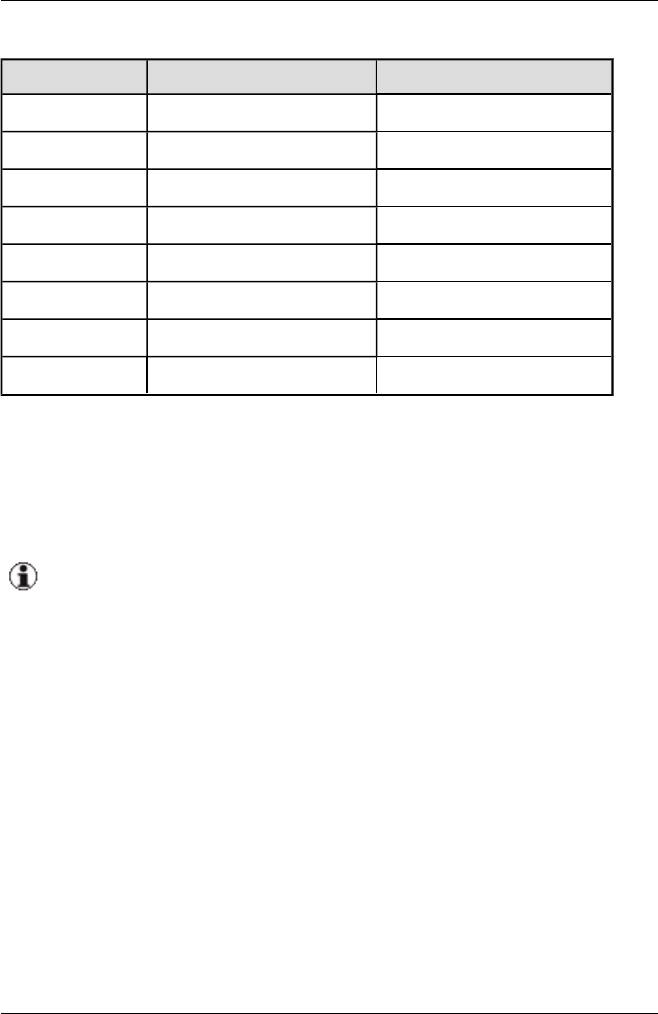
15 Appendix
These address ranges are defined as follows:
Address range Start address End address
WWN1 50:01:99:93:ED:2A:10:00 50:01:99:93:EF:1E:0D:FF
WWN2 50:01:99:93:EF:1E:0E:00 50:01:99:93:F1:12:0B:FF
WWN3 50:01:99:93:F1:12:0C:00 50:01:99:93:F3:06:09:FF
WWN4 50:01:99:93:F3:06:0A:00 50:01:99:93:F4:FA:07:FF
WWN5 50:01:99:93:F4:FA:08:00 50:01:99:93:F6:EE:05:FF
WWN6 50:01:99:93:F6:EE:06:00 50:01:99:93:F8:E2:03:FF
WWN7 50:01:99:93:F8:E2:04:00 50:01:99:93:FA:D6:02:FF
WWN8 50:01:99:93:FA:D6:03:00 50:01:99:93:FC:C9:FF:FF
If you have an address range of your own that you wish to use for virtual
MAC or virtual WWN addresses, then select it in the Custom MAC Range
or Custom WWN Range.
You can also assign individual virtual addresses when defining a VIOM
server profile.
Virtual addresses should always be taken from a reserved address
range, otherwise you might find that you are using addresses from a
vendor address range and this could result in duplicated addresses.
The original addresses of a controller should never be used as virtual
addresses in a VIOM server profile.
If you have several installations of the Virtual-IO Manager in your network,
you must ensure that the address ranges used by two installations do not
overlap. Otherwise addresses may be assigned several times to different
systems, which results in duplicated addresses.
15.3 Creating diagnostic data
To activate the trace functionality of the ServerView Virtual-IO Manager serv-
ice, please edit the file ViomConfig.properties in the directory <Server-
View Suite>\plugins\viom\Manager.
356 ServerView Virtual-IO Manager


















